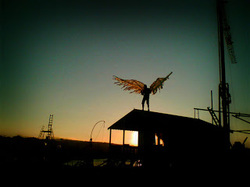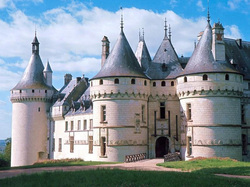Introduction
In the short story “A Very Old Man with Enormous Wings” by Gabriel García Marquez, Marquez presents the main character as an old man who appears to be an angel. By depicting the man as what an angel wouldn’t be presumed to look like, the idea of rejecting what isn’t expected is highly highlighted throughout the story.
Outline
1. When the story first began, we were introduced to an angelic old man, quickly taken in by a family. We are also shown how quickly the angel’s life is threatened by being an outcast.
a. “He’s an angel,” she told them. “He must have been coming fro the child, but the poor fellow is so old that the rain knocked him down”
b. On the following day everyone knew that a flesh-and-blood angel was held captive in Pelayo’s house. Against the judgment of the wise neighbor woman, for whom angels in those times were fugitive survivors of a celestial conspiracy, they did not have the heart to club him to death
2. As the news of the angel became more widespread, the angel started to be seen more as a carnival act than a mythical old man.
a. Then he noticed he was much too human: he had an unbearable smell of the outdoors, the back side of this wings was strewn with parasites and his main feathers had been mistreated by terrestrial winds, and nothing about him measured up to the proud dignity of angels
b. He reminded them that the devil had the bad habit of making use of carnival tricks in order to confuse the unwary
c. The news of the captive angel spread with such rapidity… Elisenda then got the idea of fencing in the yard and charging five cents admission to see the angel
3. When the angel stopped receiving visits, he becomes seen as a bother more than a blessing. The angel eventually leaves the family and they do not realize what they have until it is gone, and they are faced with the reality that the old man is an angel, and shouldn’t come quick to judge.
a. … Pelayo’s courtyard went back to being as empty as during the time it had rained for three days and crabs walked through the bedrooms
b. They would drive him out of the bedroom with a broom and a moment later find him in the kitchen.
c. … he was no longer an annoyance in her life but an imaginary dot on the horizon of the sea
a. “He’s an angel,” she told them. “He must have been coming fro the child, but the poor fellow is so old that the rain knocked him down”
b. On the following day everyone knew that a flesh-and-blood angel was held captive in Pelayo’s house. Against the judgment of the wise neighbor woman, for whom angels in those times were fugitive survivors of a celestial conspiracy, they did not have the heart to club him to death
2. As the news of the angel became more widespread, the angel started to be seen more as a carnival act than a mythical old man.
a. Then he noticed he was much too human: he had an unbearable smell of the outdoors, the back side of this wings was strewn with parasites and his main feathers had been mistreated by terrestrial winds, and nothing about him measured up to the proud dignity of angels
b. He reminded them that the devil had the bad habit of making use of carnival tricks in order to confuse the unwary
c. The news of the captive angel spread with such rapidity… Elisenda then got the idea of fencing in the yard and charging five cents admission to see the angel
3. When the angel stopped receiving visits, he becomes seen as a bother more than a blessing. The angel eventually leaves the family and they do not realize what they have until it is gone, and they are faced with the reality that the old man is an angel, and shouldn’t come quick to judge.
a. … Pelayo’s courtyard went back to being as empty as during the time it had rained for three days and crabs walked through the bedrooms
b. They would drive him out of the bedroom with a broom and a moment later find him in the kitchen.
c. … he was no longer an annoyance in her life but an imaginary dot on the horizon of the sea



 RSS Feed
RSS Feed